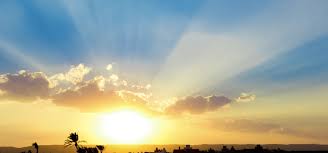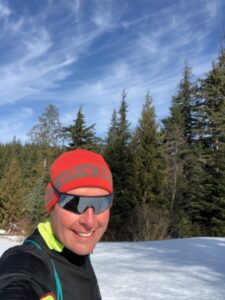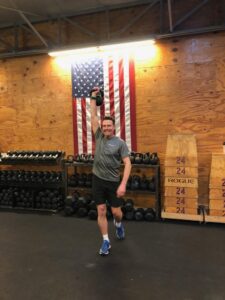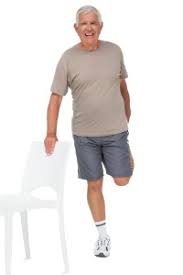

The Wheels Of Health – Balance
For those that read my blog, you will know that I refer to the “Wheels of Health” and the fact that all of them need to be in balance in order for us to lead happy, healthy and productive lives. The Wheels of Health that I believe need to be in balance are:
- Movement (Exercise)
- Mindfullness (Mental Health)
- Sleep
- What we Eat (Food)
I believe that each of these “Wheels” need to be in balance or it affects the others. For example if you don’t have a great nights sleep then perhaps the next day you don’t feel like exercising, you may reach for unhealthy foods and it may affect your mental disposition. Therefore it is important that every day we do what we can to keep all of our health wheels in balance.

Movement
The wheel that I am asked most often about is Movement or Exercise and people want to know what my workout or exercise routine is so I thought I would share that today.
The reason I refer to this as “Movement” is that is all that one needs to do – Just Move. Most people mistakenly believe that the only way to exercise effectively is to get on a treadmill, elliptical trainer, lift intense weights or just go full out during any exercise. I am sure you have heard the term “No Pain, No Gain” which implies that if we don’t push super hard, we are not getting any fitness benefit.
My belief is the key to longevity it to just do something — just move. This can be as simple as stretching, going for a walk, going for a hike or an easy bike ride. In fact I feel the less strenuous the activity is, the more I seem to benefit from an emotional and mental standpoint. For example, when I am out for an “easy” hike, run, walk or bike, I can’t help but notice all of the nature and beauty around me. I find personally that my favourite mentally stimulating workouts are the ones where I exercise longer and slower and just really enjoy the everything around me. For more on living in the present, you can read it on this blog from 2017 – 5 Strategies to Live In The Moment: https://kevinbradyhealth.ca/5-strategies-to-live-in-the-moment/

The Longest Living People On the Planet – Sardegna
You have heard me refer in previous blogs to Dan Buettner’s Book – The Blue Zones whereby he studies the habits of the longest living people in the world as defined by the number of centurions. Centurions by definition are people that reach 100 years in age. None of the people in The Blue Zone communities that Dan studied have a scheduled daily “work out,” they just have hours of continuous movement as part of their daily life. I have personally visited one of these Blue Zones in Sardegna Italy and most centurions include very moderate movement as part of their daily life by working on their land, farming, working with animals and herding sheep.
What is my Exercise Routine?
I think if all we do is focus on one type of exercise (example — exclusively cardio training) that other elements of our overall fitness and vitality suffer such as strength and flexibility. I look at it as a 4 legged stool that all need to be in balance from an exercise standpoint. The 4 components of exercise that are vital particularly as we age are Cardiovascular, Strength, Stretching and Balance. This is of particular importance as we age as many injuries and subsequent effects on life are due to people falling due to balance and/or strength issues. One in four people aged 65 and over, fall each year. Falls are the leading cause of fatal injury and the most common cause of hospital admissions amongst older adults.
One of the most common questions I get from people is asking details around my exercise habits and routines. Please keep in mind that depending on the time of year it is, I shift my training based on whether it is racing season or whether I am rebuilding or recovering from racing season. Since there were no races this year due to Covid, I used this year as a time to gain strength in order to avoid injuries in the future and also build my endurance. I must say although I really missed racing and attending the World Championships, I did learn to enjoy training without all of the normal speed work I traditionally do.
Below is what I do most of the year in terms of exercise routine.

1.Cardiovascular
This would be the core of my training and I typically engage in Cardiovascular activity 3-4 days per week. Traditionally this is cycling, running and swimming in preparation for my Triathlon racing season. This past summer I re-injured my hamstring so I have not run in a few months. This year I have especially made it a point of training outside as much as possible (cycling,moutain biking) as I feel that with all the time I am spending indoors on the computer and in virtual meetings, it is important to get outside and get fresh air from a mental and physical standpoint. If you missed my blog on the 8 Benefits of Exercising Outside, you can access it here: https://kevinbradyhealth.ca/the-8-benefits-of-getting-outside-during-covid/
As outlined above, cardiovascular training does not have to be on a treadmill, running, swimming or biking. I believe that for longevity, the best exercise is slow, easy, continuous movement such as walking or hiking for 60 minutes per day.

2.Strength Training – Key as we age
One of the things I have made a point of focusing on the last few years has been strength training as part of my regular exercise routine. I have focused on this in order to improve my racing and also to prevent injury as I get older. I believe the number one component of injury prevention is strength training and right now, I am doing strength training 3 days per week most weeks. A special shout out to son Matt who puts my (and many others) training programs together.
As we age, we typically lose muscle mass so it is even more important that we continue to build strength in order to replace muscle lost due to aging. In addition, strength training also increases testosterone release as well and HGH (Human Growth Hormone) which also typically decrease with age.
3.Stretching/Rolling
As part of my routine, I regularly stretch as well as use a vibrating roller to roll out sore muscles. I believe this is important in order for recovery and also ensure I can have great workouts. Quite often on my day off, I devote my regular workout time (first thing in the morning) to stretching and rolling and I must say that I do it so vigorously that it actually feels like I have had a workout. In particular as we age it is important to keep our muscles and our ligaments subtle and therefore we need to make sure stretching is a component of our regular routine.
4. Balance
Balance is also critical as we age as like the loss of muscle and flexibility, it contributes to a significant increase in injuries due to falling for elderly people. I must admit that balance has not been a regular part of my fitness routine however as I age I will be incorporating balance exercises into my routine. One balance test that we have all likely done, is to stand on one leg and close your eyes. It is interesting to see how quickly we lose our balance when we do this. Through practice doing this on a regular basis, it is amazing how quickly our balance improves.
Summary.
I believe that as we age, we can offset our chronological aging by incorporating certain activities into our regular routine. Many feel that falling and injury due to aging is just normal and part of the aging process. I am of the belief that we can do things to prevent injury and slow aging by incorporating certain things into our daily exercise regimen.
Most importantly, please ensure you build all 4 legs of the “stool” into your weekly routine:
1.Movement
2.Strength training
3.Stretching
4.Balance
I wish you and your family all the best in health and happiness as we get closer to the holiday season,
Kev



1 comment
Thanks Kev…for your dedication to wellness…Marge